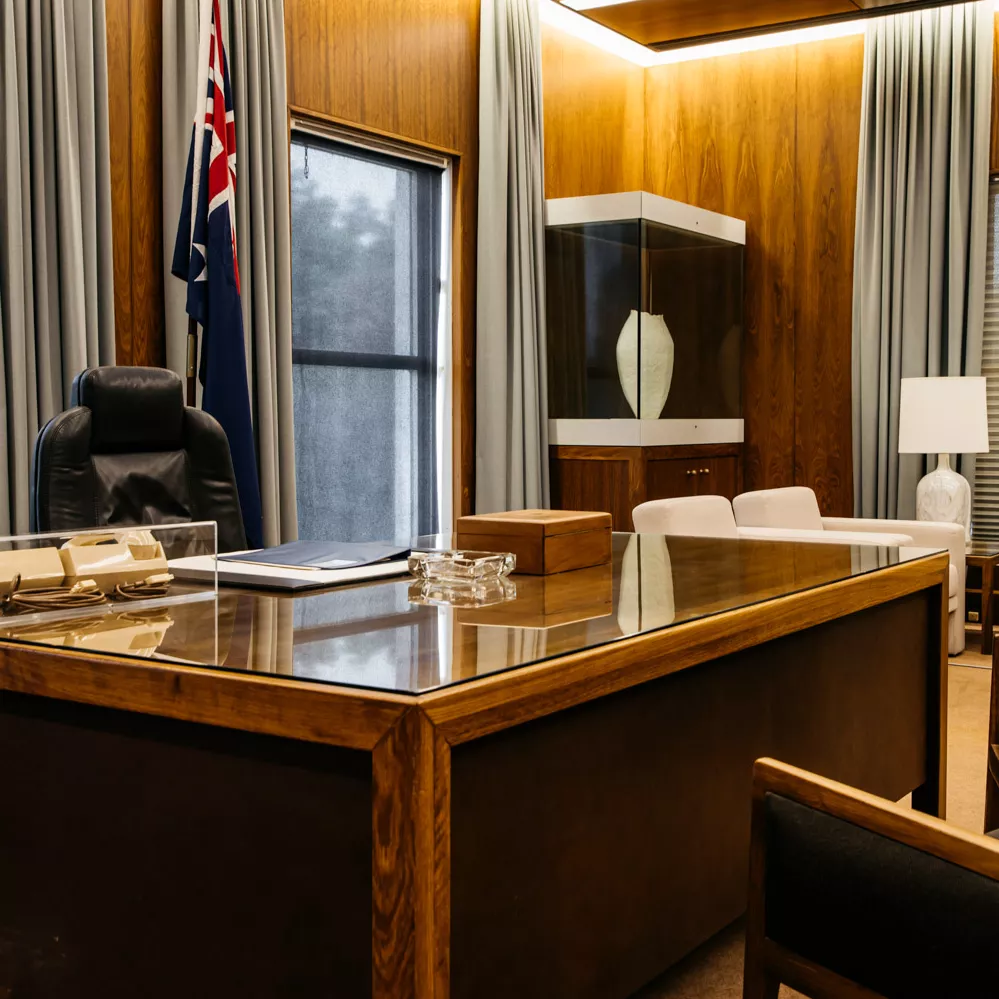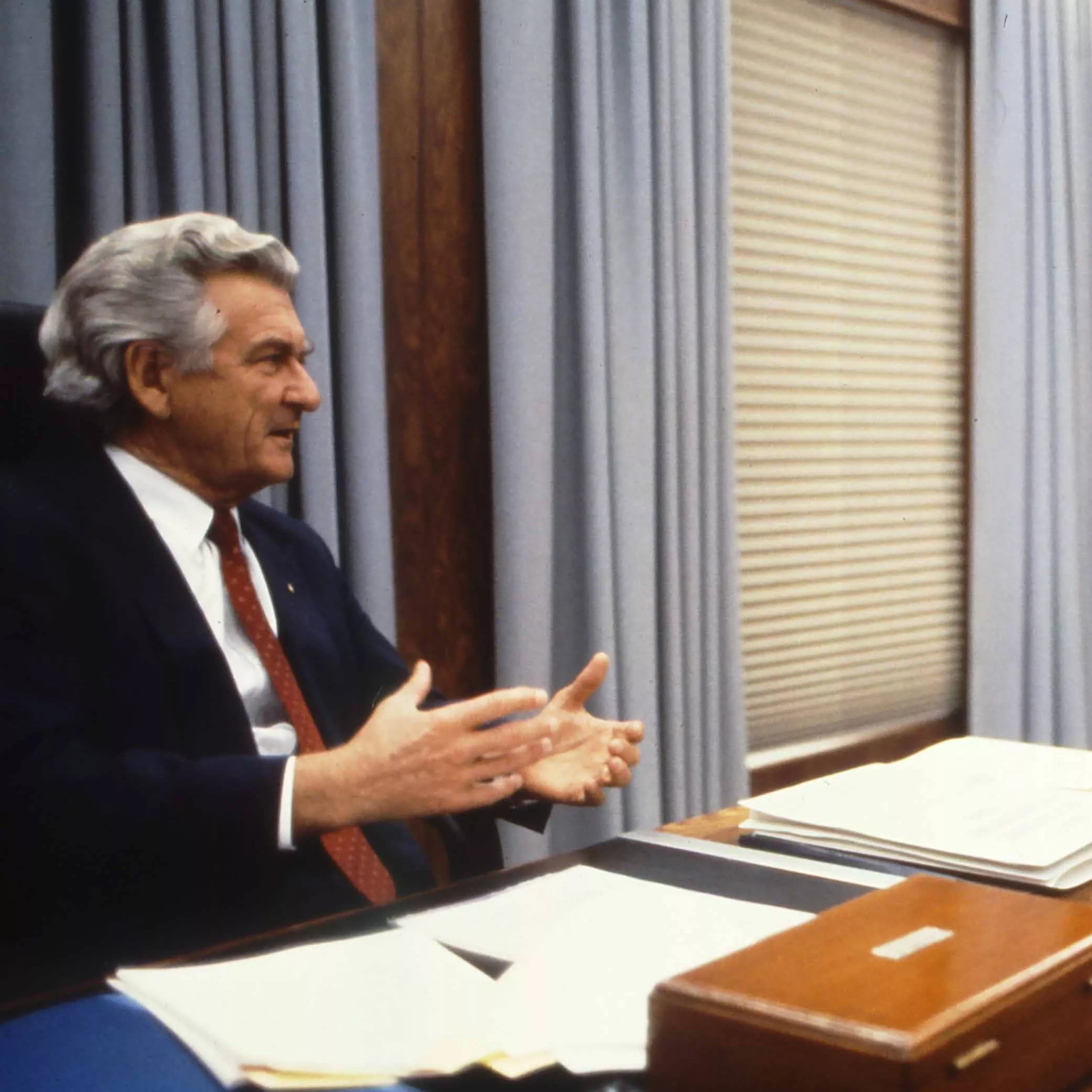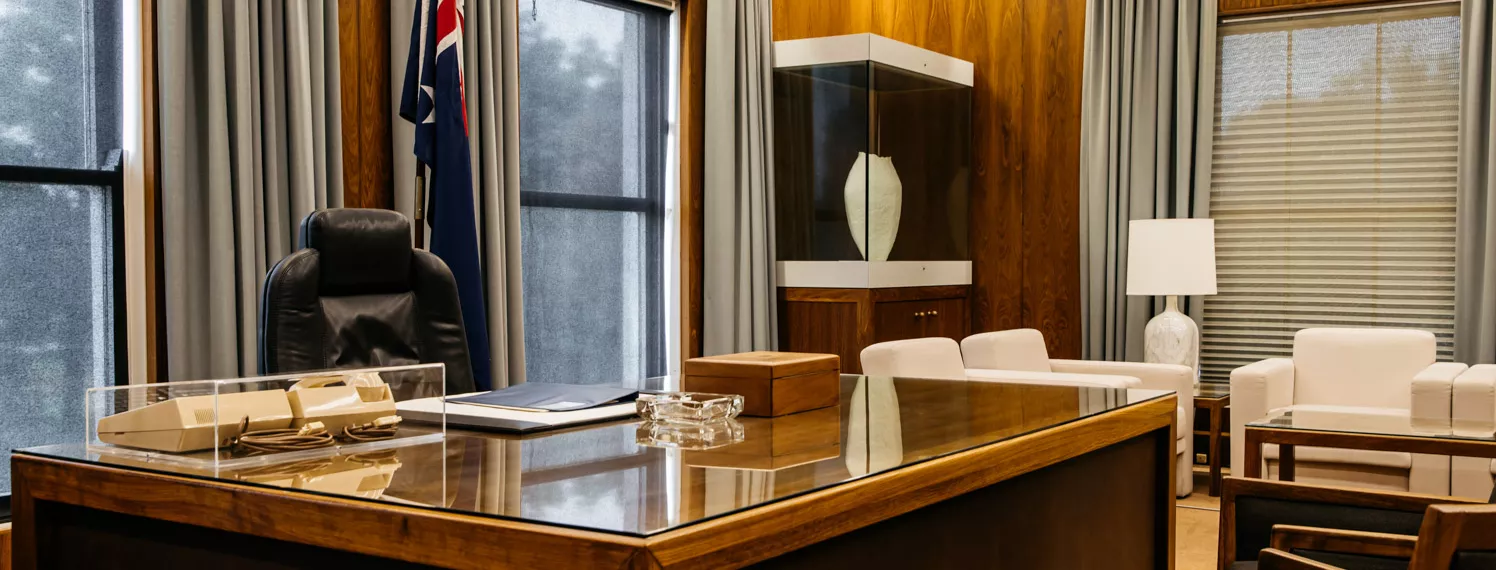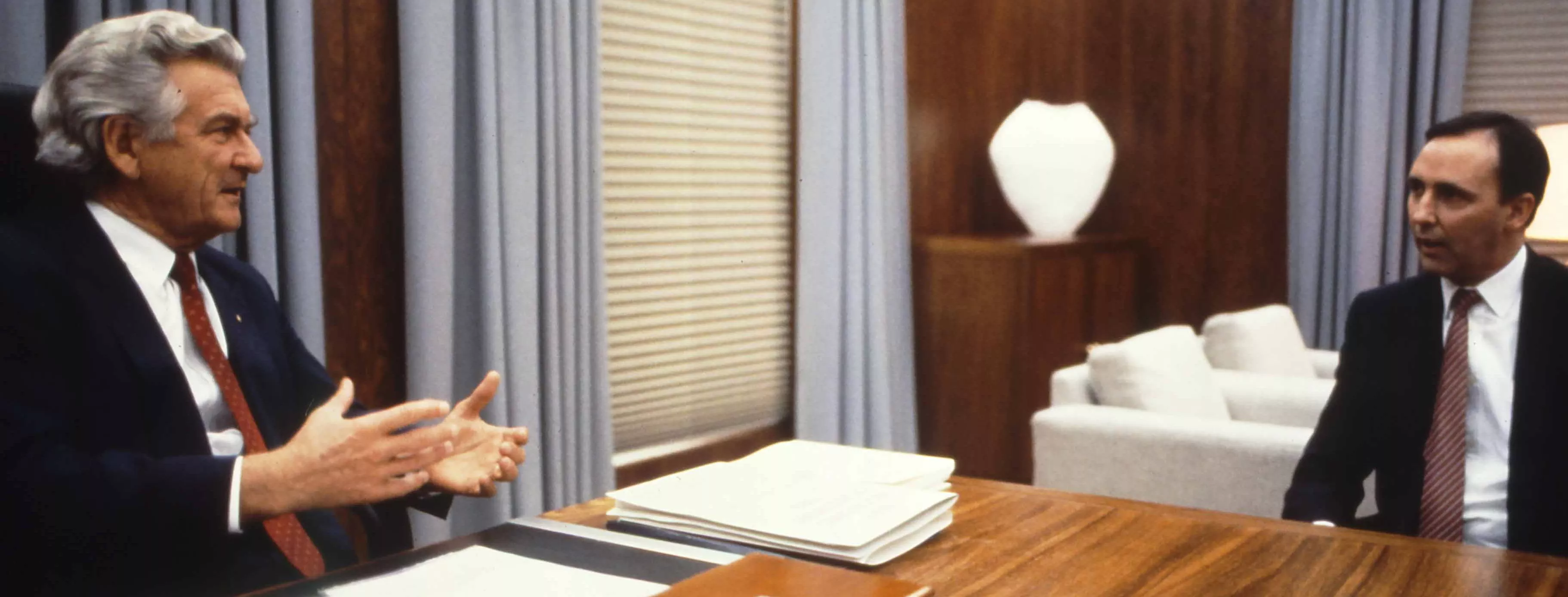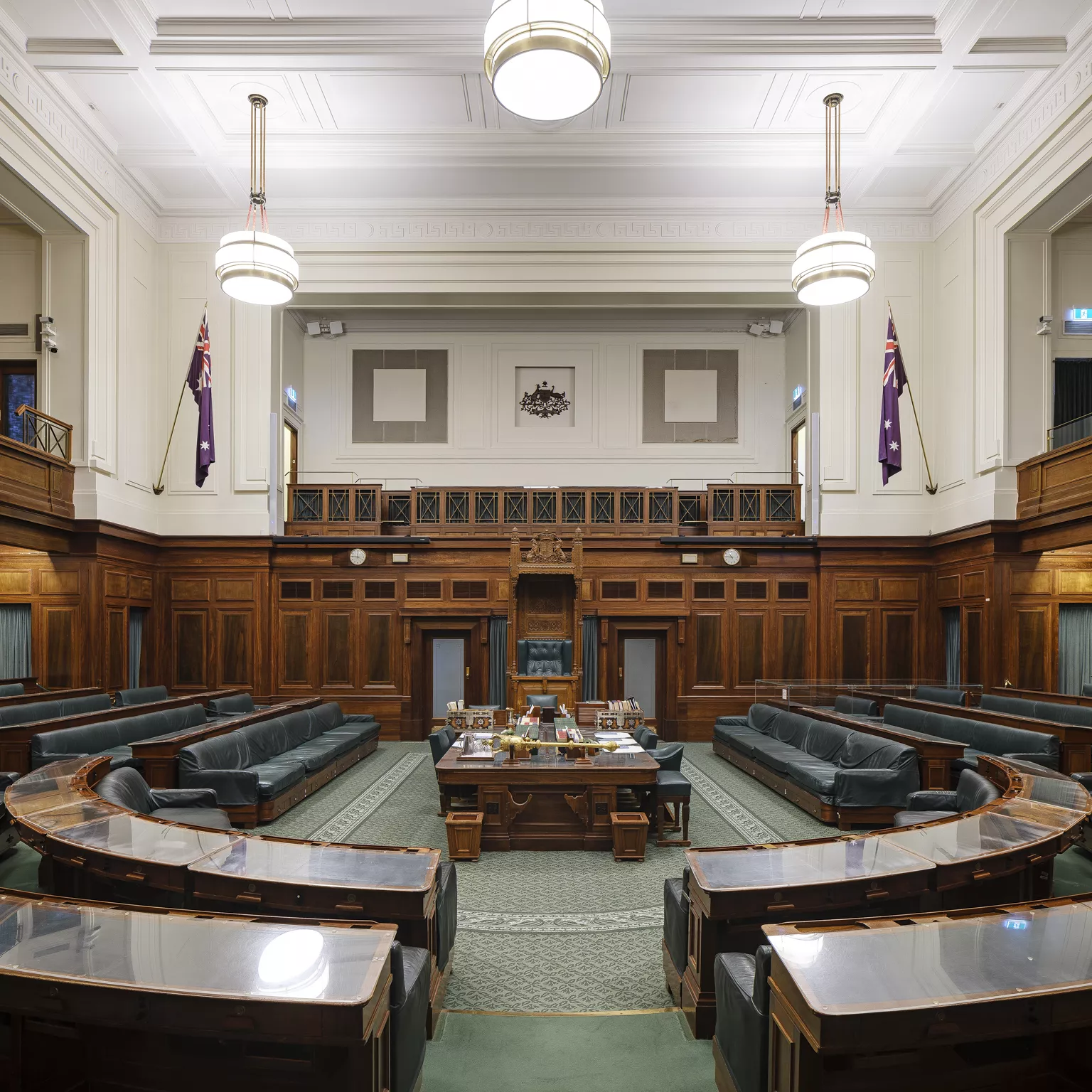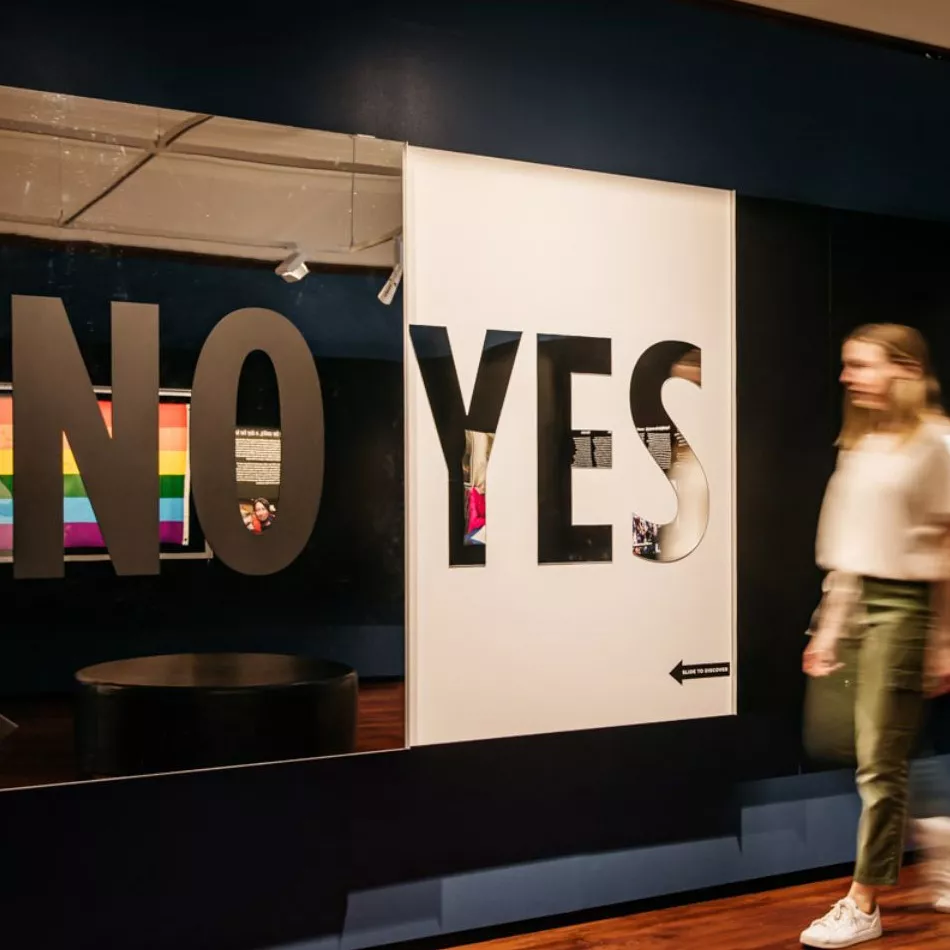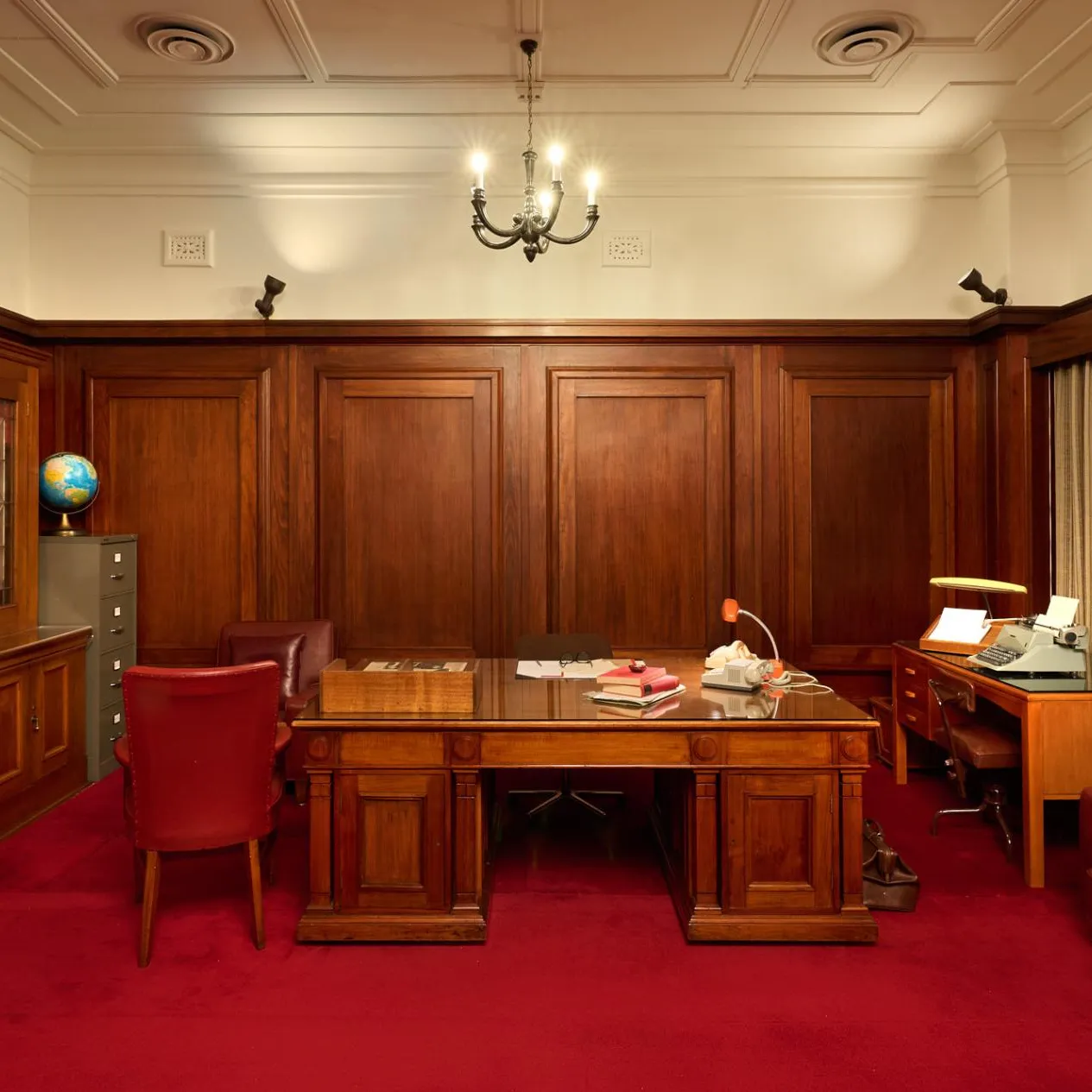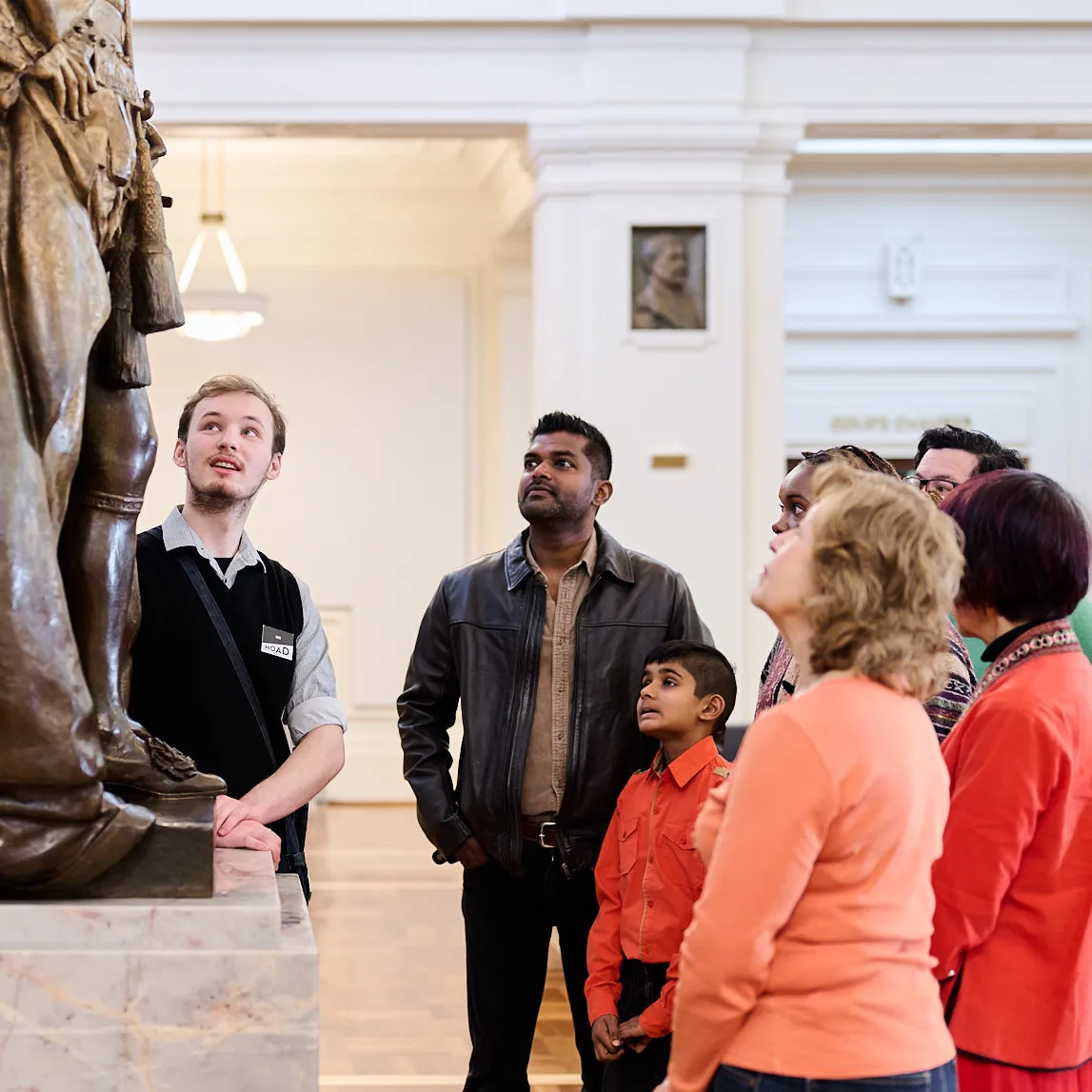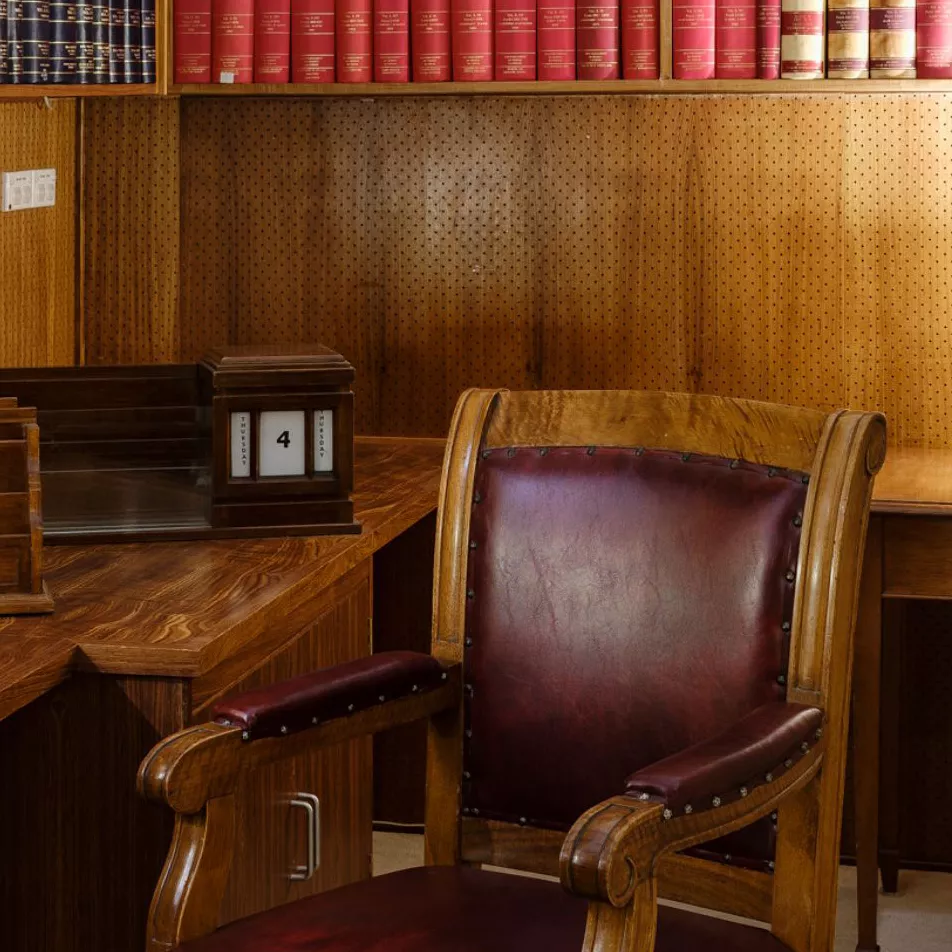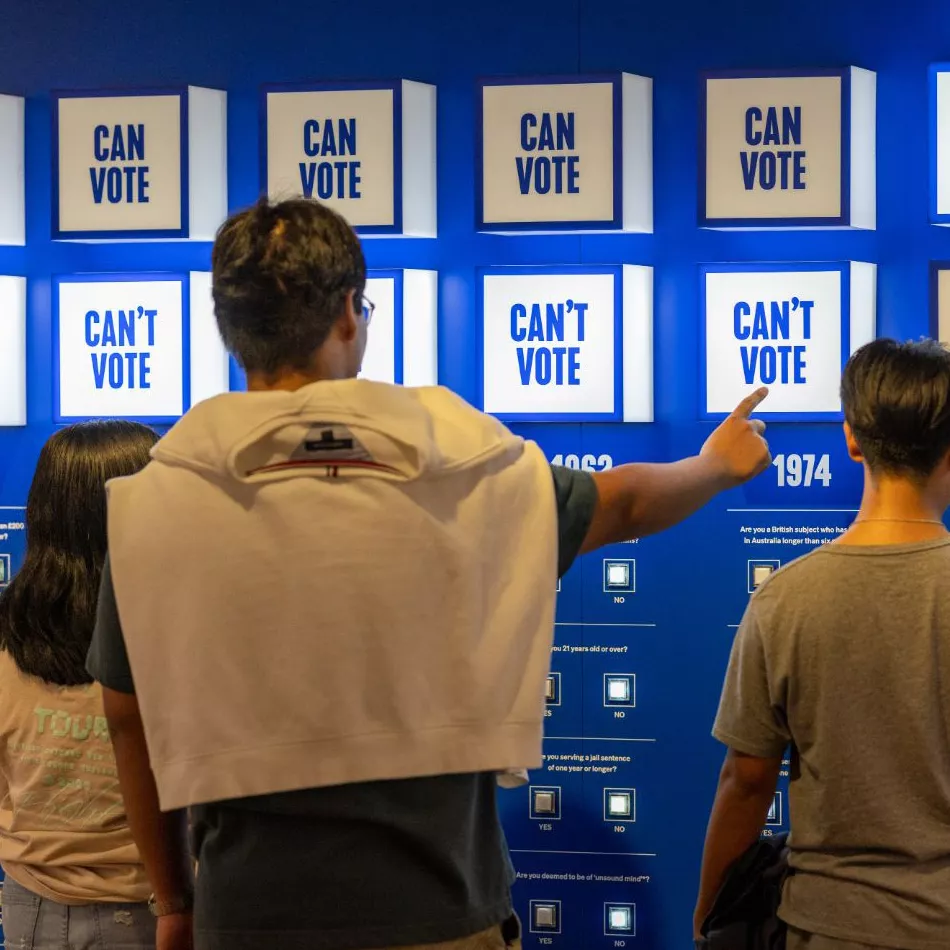Prime Minister's Suite
Explore the surprisingly humble office where Gough Whitlam, Malcolm Fraser and Bob Hawke once led the country.
Location
Main floor
See the Black Bean desk where Hawke would pore over briefings or smoke a cigar late into the night. Peer into the maze of tiny offices where the Prime Minister's staff worked long hours, complete with ashtrays, typewriters and pinboards – just as it would've been in the '80s.
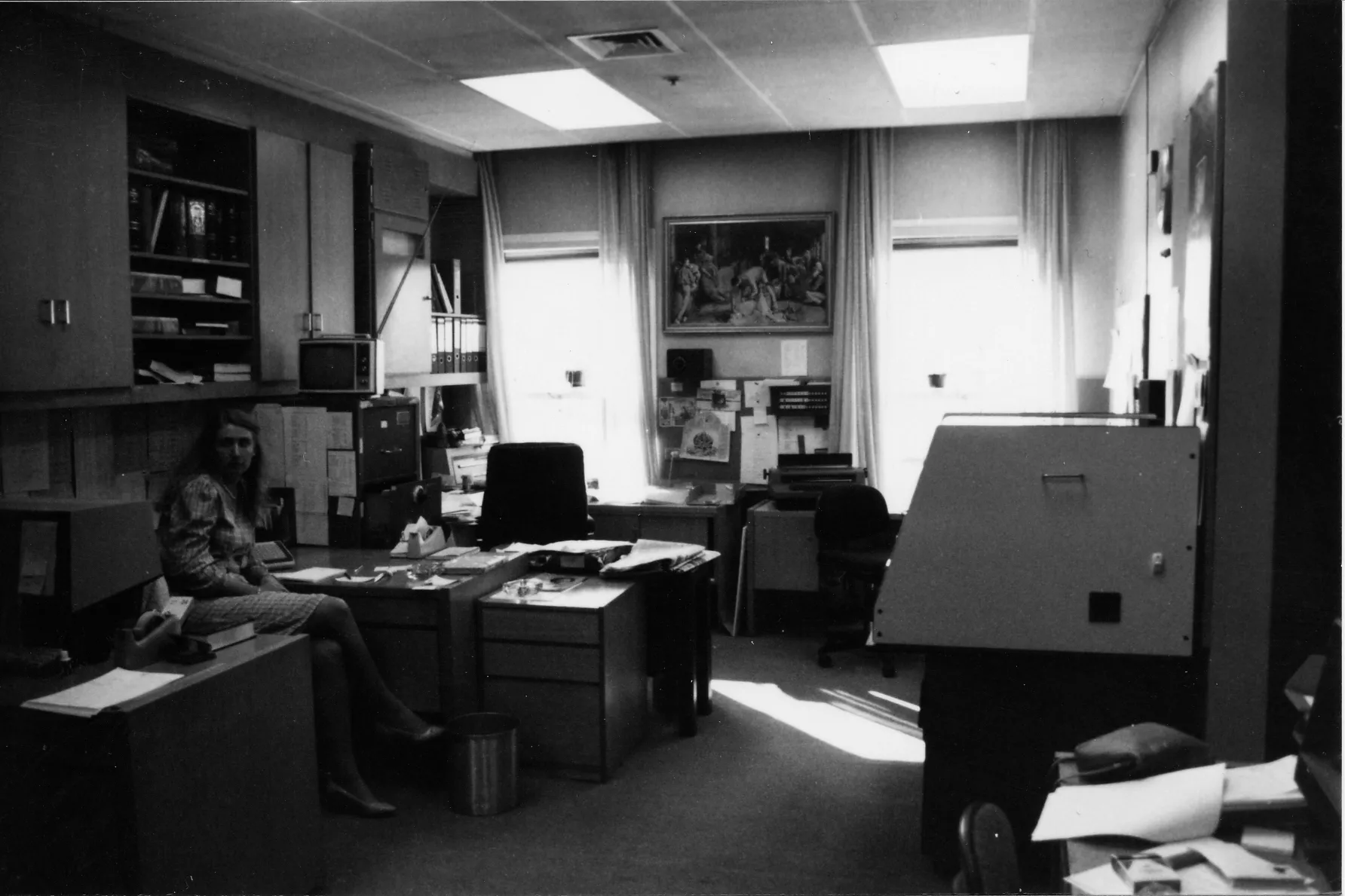

Secretary Heather Mittag sits in the small general office in the Prime Minister’s Suite in 1985. The office was used by an office manager, a telephone receptionist, a Cabinet secretary and several steno-secretaries. These hard-working members of staff worked long hours and when rostered for the evening shift it was not uncommon for them to leave work at 1am or later.
MoAD Collection
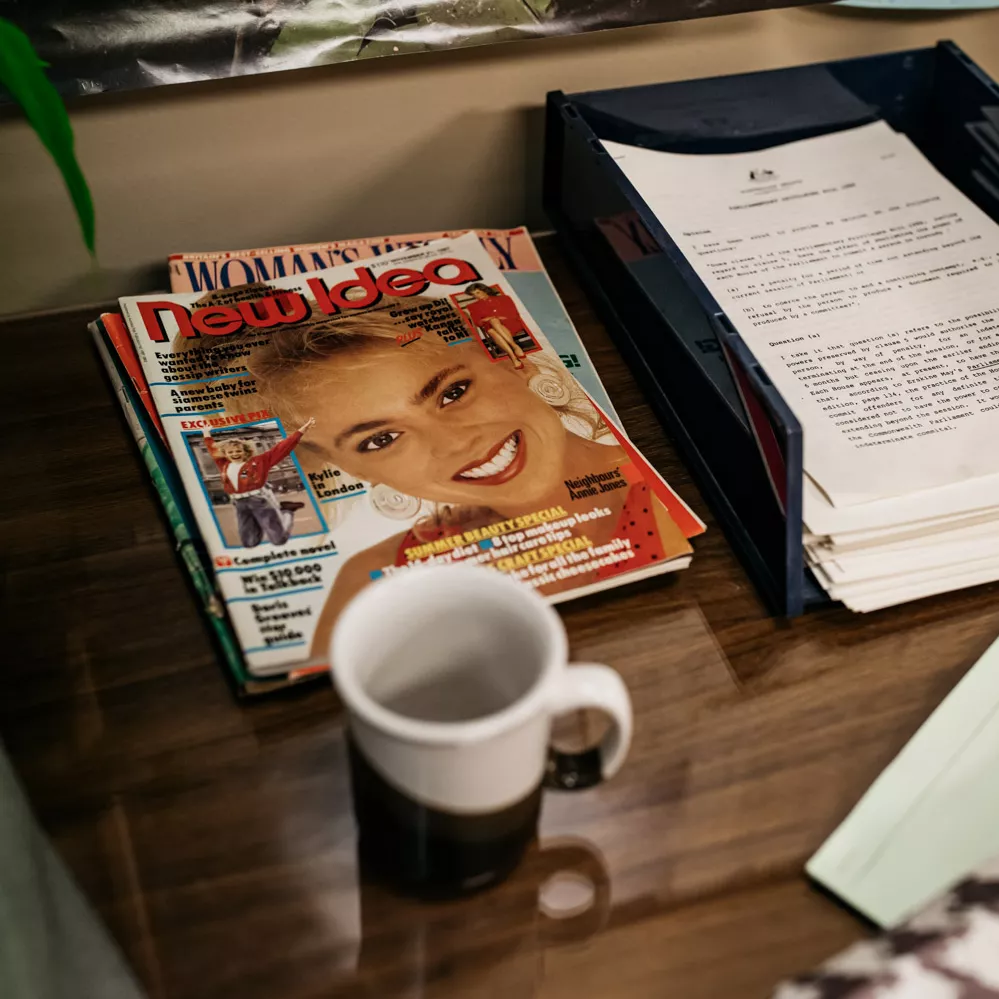
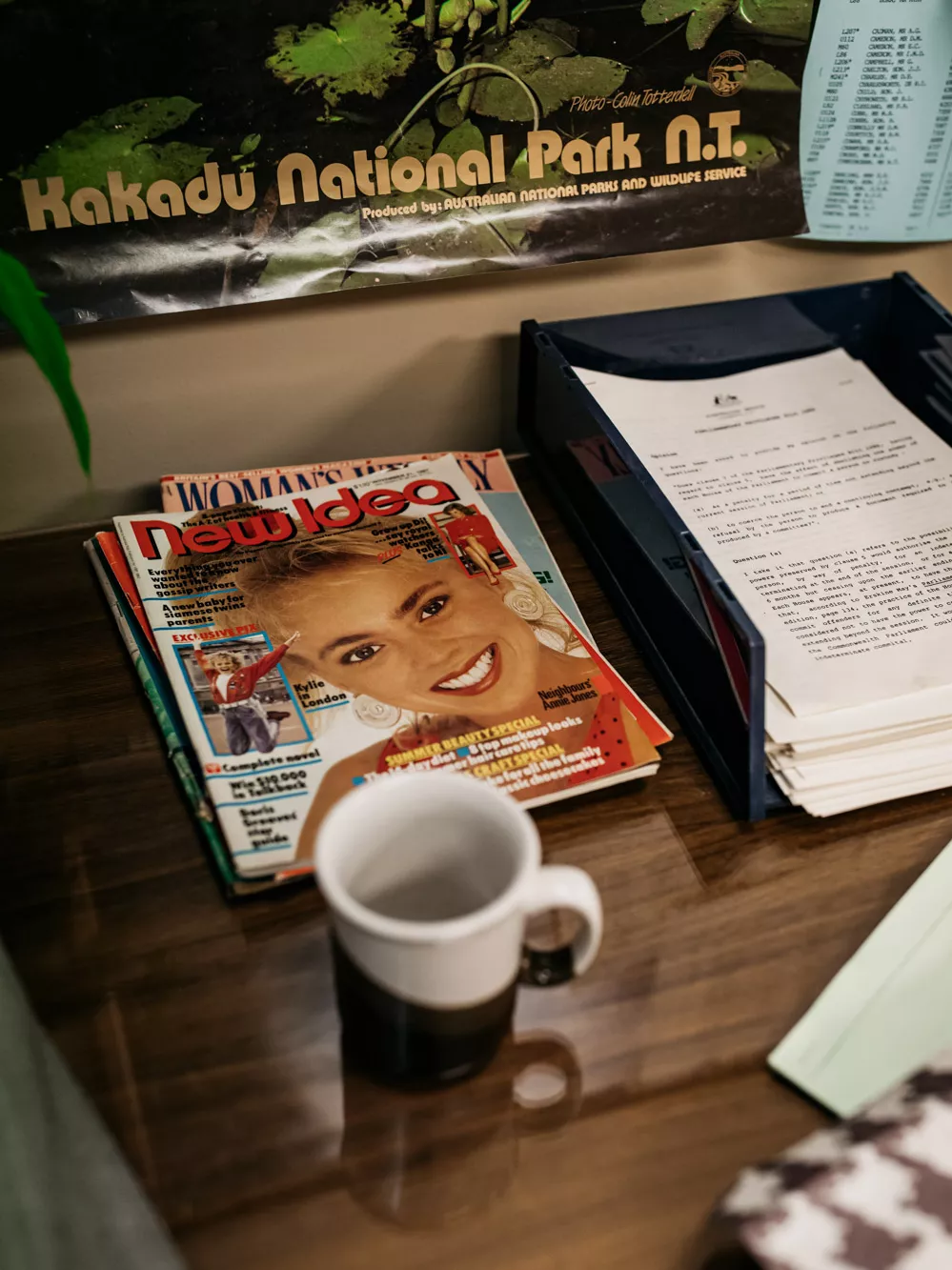
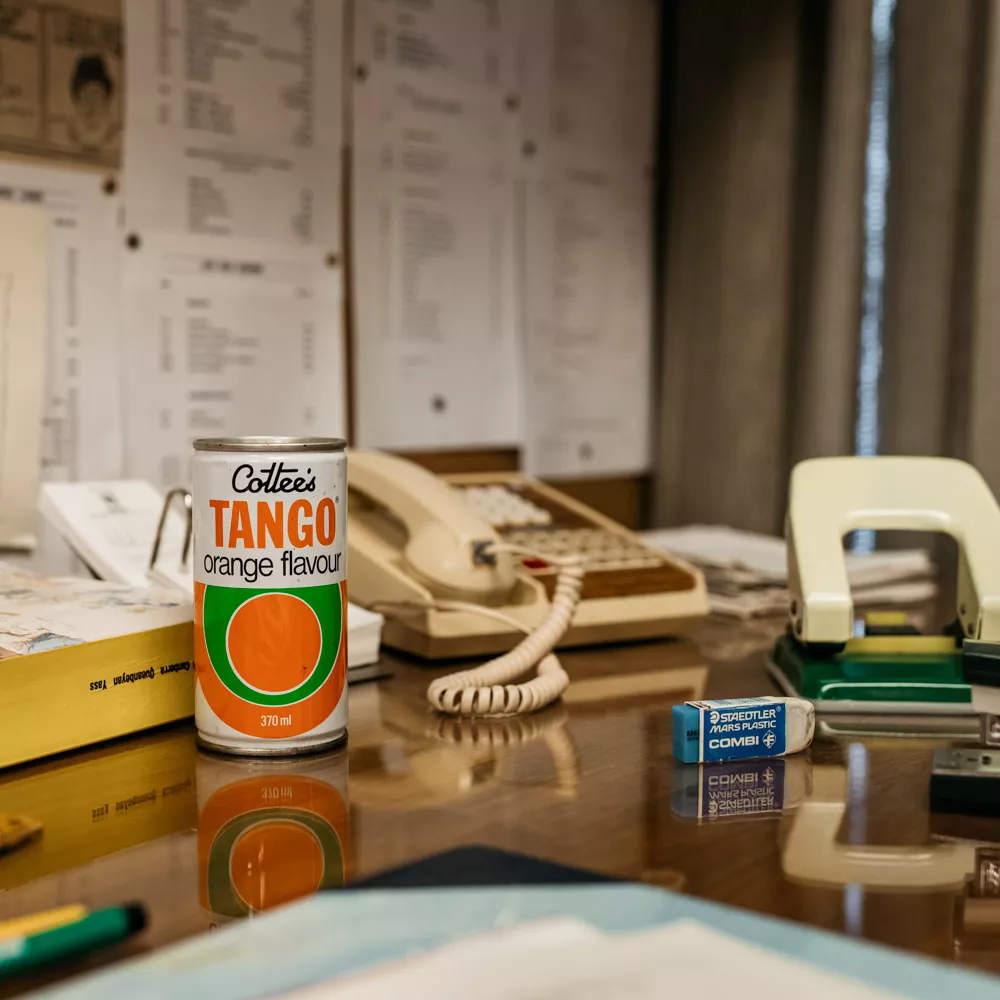
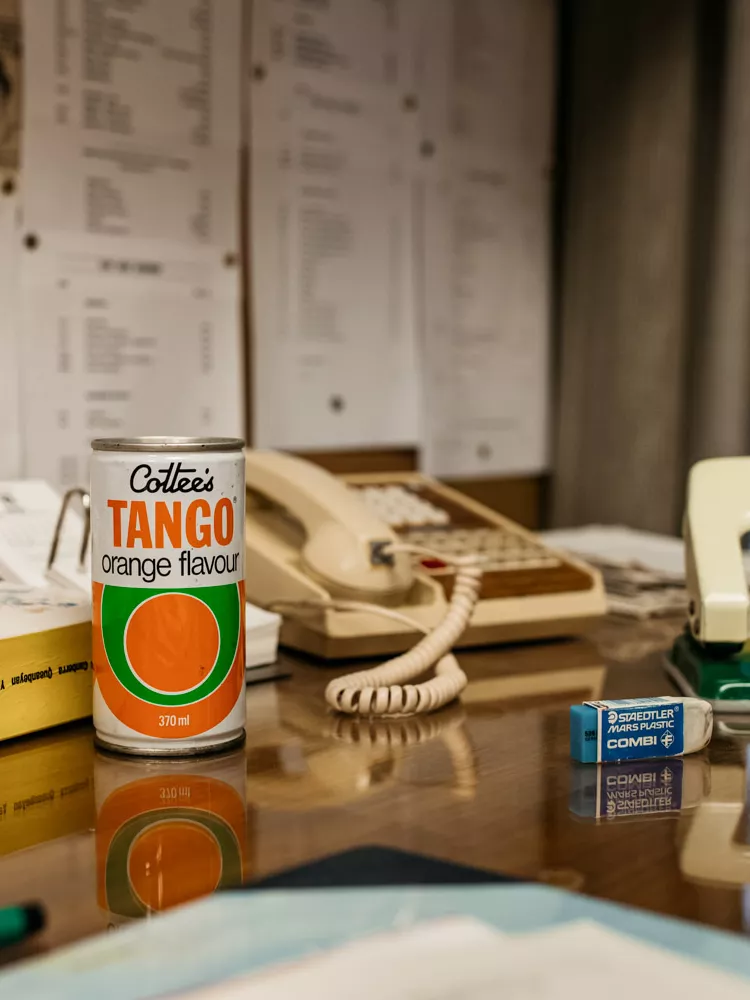
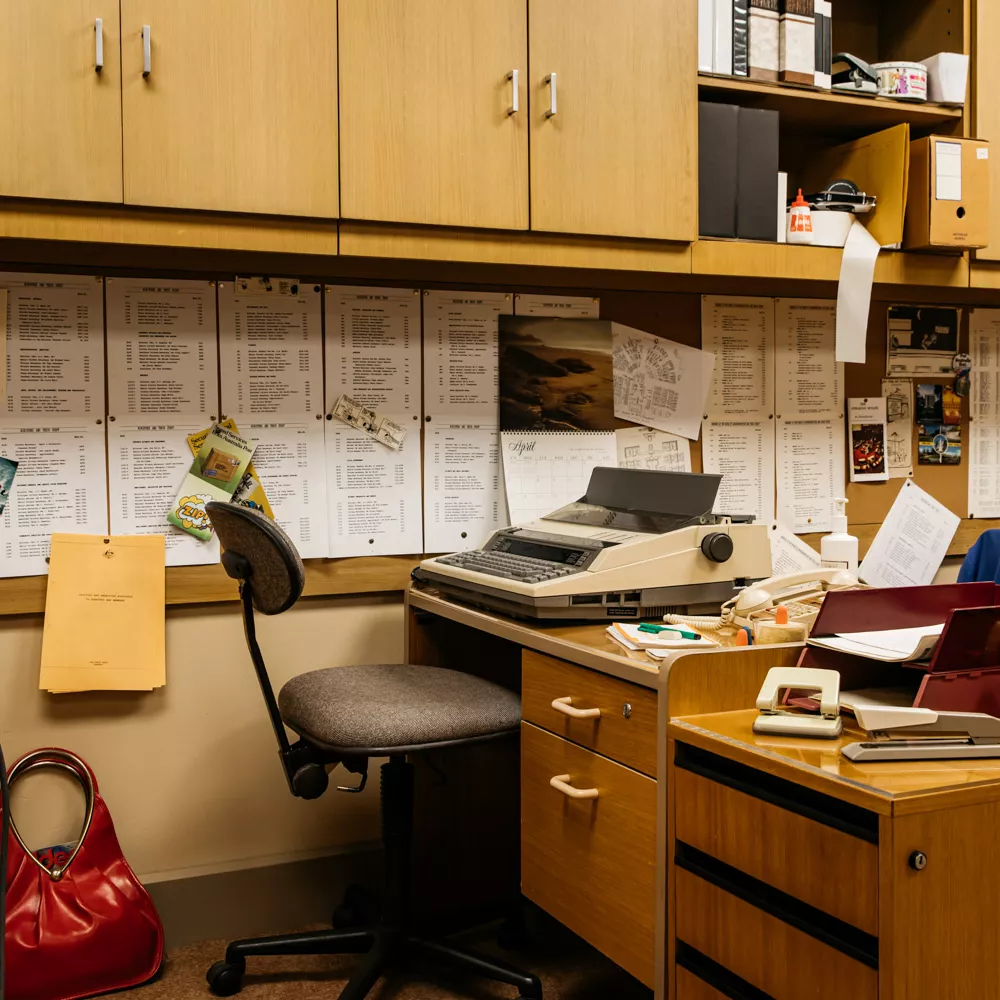
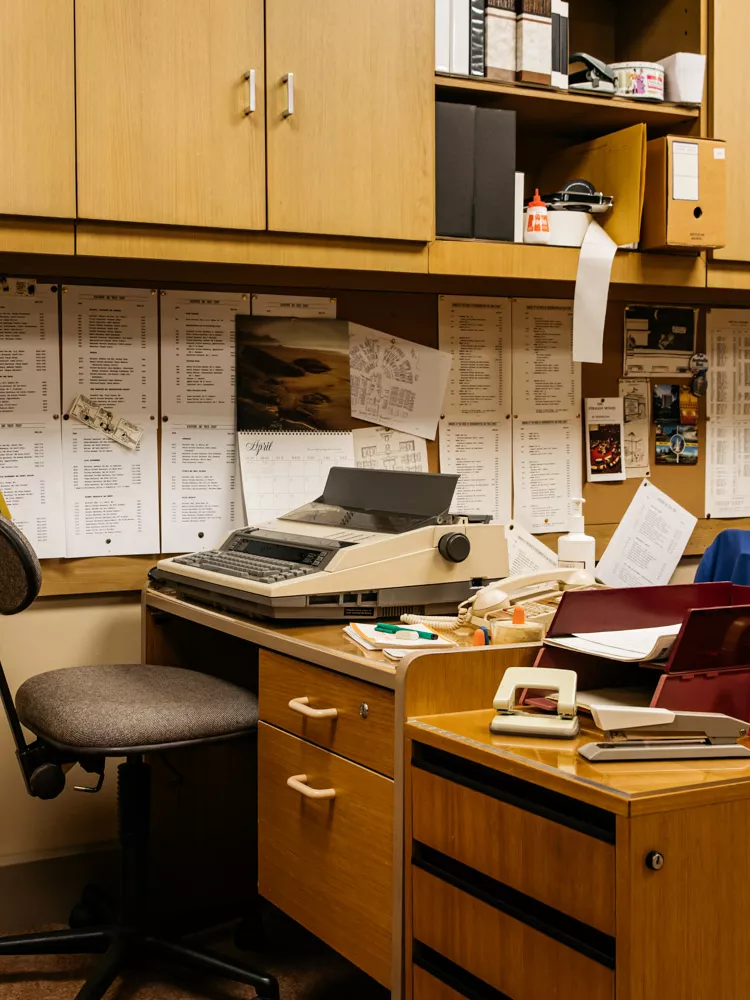
Plan your visit
There are small rooms and some narrow spaces.

